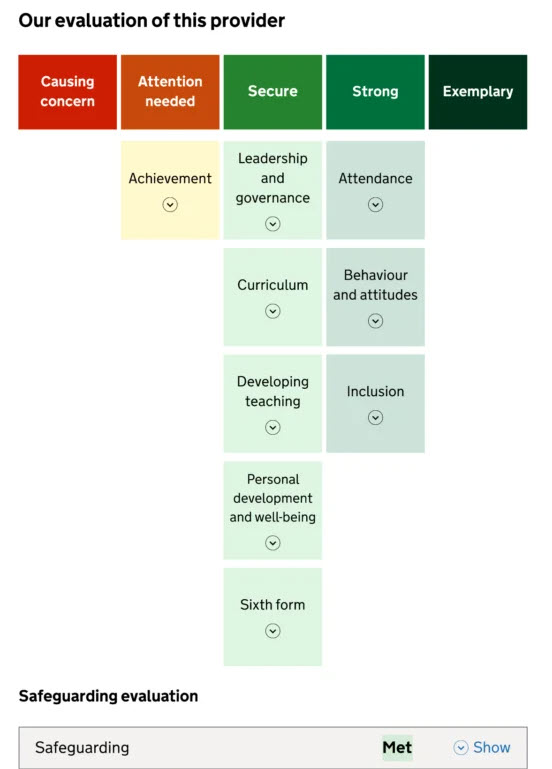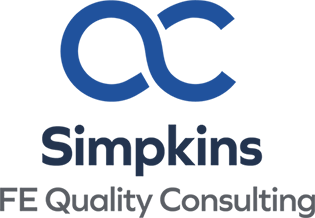
Ofsted’s Report Card Proposals: Evolution, Not Revolution
The recent Ofsted report card proposals represent a significant shift in inspection frameworks, yet their real impact remains debatable. While these changes claim to address longstanding concerns about one-word judgments and oversimplification, I can’t help but feel that this is simply a more complicated repackage of the system we already have, an evolution, not a revolution.
As a nominee of a recent first full Ofsted inspection that achieved an outstanding rating, I understand the complexity of inspections and the challenges educators face. These changes, while well-intentioned, may create more confusion than clarity, both for providers and the wider education sector.
More Nuance, But at What Cost?
The shift to a five-point scale from “Causing Concern” to “Exemplary”, appears to add nuance to judgments, but the reality is far more complex. For Further Education (FE) providers offering provision across multiple streams; 16 to 19, Adult Education, Apprenticeships, and High Needs, the number of judgments will double from ten to twenty.
This creates a new layer of complexity that will be difficult to navigate for educators, leaders, and even parents. Increasing the number of categories doesn’t necessarily mean greater clarity and instead, lead to more bureaucracy and confusion when trying to interpret reports.
A key aspect of these changes is the introduction of Ofsted’s new report card format, which aims to provide a more detailed assessment of a provider’s strengths and weaknesses. Below is an example of how these report cards could look:
Understanding the New Ofsted Report Cards
The rationale behind this change is rooted in feedback from The Big Listen, a consultation that gathered insights from parents, carers, and education professionals. While parents wanted clearer, more structured feedback, professionals preferred a narrative-based approach. The new report cards attempt to bridge these preferences by providing a colour-coded five-point scale across multiple assessment areas alongside a brief narrative summary.
Breaking Down the New Grading System:
- Causing Concern (Red) – Indicates urgent intervention is needed.
- Attention Needed (Orange) – Highlights areas requiring improvement.
- Secure (Light Green) – Reflects adequate performance but with room for growth.
- Strong (Green) – Demonstrates high standards with only minor refinements needed.
- Exemplary (Dark Green) – Recognises exceptional performance that should be shared as best practice.
Additionally, safeguarding will be assessed separately, with a simple “Met” or “Not Met” classification rather than being integrated into overall effectiveness.

Fairness and Practicality for FE Providers
One of the biggest concerns is how these changes will impact different types of providers. While some institutions may only see an increase in the number of judgment areas, FE providers operating across multiple funding streams will face an overwhelming number of assessments.
Judging a provider across 20 different areas is not only excessive but also risks creating an unbalanced system where larger, more complex providers are unfairly scrutinised compared to those offering a more limited range of provision. This doesn’t create a fairer system and it simply creates more administrative pressure without necessarily improving the quality of education.
A Renewed Focus on Data, But Is It the Right Approach?
The increased emphasis on achievement, particularly when judged against national benchmarks, is another potential issue. Data is important but cannot be the sole measure of success. Education providers work with diverse learners, many of whom face significant barriers to success that raw data alone cannot capture.
There is mention of contextualising achievement data based on learner characteristics and local demographics, which is a step in the right direction. However, the effectiveness of this approach will depend entirely on how it is implemented. If not carefully balanced, the system could end up penalising providers that work with harder-to-reach learners rather than supporting them.
Can Ofsted Deliver Reliable Judgments at This Scale?
Another major concern is whether Ofsted can maintain consistency and reliability when making a significantly higher number of judgments. Even under the current system, consistency has been an issue, with similar providers sometimes receiving very different ratings based on subjective interpretation.
By increasing the number of judgment areas and adding a new five-point scale, the risk of inconsistency only grows. If two different inspection teams can assess the same provider and come to wildly different conclusions, how can this system be trusted to provide a fair and accurate reflection of quality?
My Expert Opinion
From my perspective, these proposals feel more like a restructuring of the existing system rather than the fundamental change that many in the sector had hoped for.
While moving away from one-word judgments is a step forward, replacing them with multiple layers of assessment could make inspections even more stressful and difficult to navigate. The increased complexity may not necessarily lead to better outcomes and instead it could simply result in more pressure for providers, inspectors, and stakeholders trying to make sense of the new system.
Further Education providers, in particular, may find themselves disproportionately affected by these changes. The additional scrutiny placed on those offering multiple funding streams could create an unfair playing field where institutions that serve a diverse range of learners are judged more harshly simply because they operate at scale.
Ofsted’s aim should be to create a framework that supports quality improvement, not one that overburdens providers with excessive administrative demands. If the goal is to ensure high standards while reducing pressure, then these proposals need significant refinement before they are implemented.
For those preparing for inspections under this new system, having a clear understanding of the requirements and expectations will be crucial. If you need support in navigating these changes, ensuring quality standards, or preparing for inspection, I’m here to help. Get in touch for a free consultation, and let’s work towards practical solutions that genuinely improve education, rather than making it more complicated.




